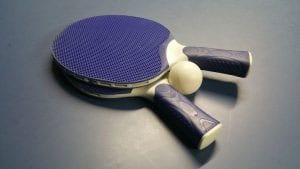According to a story from Parkinson’s News Today, an approach called whole-body electromyostimulation (WB-EMS) was able to benefit Parkinson’s disease patients in a small scale study. These patients were not regularly exercising. WB-EMS involves triggering muscle contractions. The approach improved hand-eye coordination, endurance, and upper/lower body strength in general. WB-EMS, also just known as electrical muscle stimulation, has been used by athletes to help with strength training.
About Parkinson’s Disease
Parkinson’s disease is a type of long-term, progressive, degenerative illness that affects the central nervous system. Symptoms tend to develop over a period of years and primarily affect the movement ability and mental state of the patient. The cause of Parkinson’s disease remains a mystery, although there are a number of risk factors that have been identified. These factors include head injuries, pesticide exposure, and certain genetic variants and mutations. About 15 percent of patients have a close relative with the disease, suggesting some genetic connection. Symptoms include slowed movements, poor coordination, trouble walking, shaking, stiffness, abnormal posture, depression, anxiety, inhibited thinking, hallucinations, and dementia. Treatment may involve a number of medications, rehabilitation, and surgical operations. Survival rate varies, but most patients survive around a decade after getting diagnosed. To learn more about Parkinson’s disease, click here.
Maintaining Function
Exercise is recommended for Parkinson’s patients as a way to improve overall health and slow the progression of movement decline. However, in reality, many patients end up living an inactive lifestyle as movement becomes more difficult and their coordination declines. The study hoped to explore electrical muscle stimulation as a rehabilitation tool for patients that had lost part or most of their mobility.
About The Study
The study included a total of ten patients (four females and six males). These patients had mild to moderate disease and were not involved in regular exercise programs. Patients underwent the procedure and then, following a brief warm-up, underwent a 20-minute session of guided exercise. Exercises included crunches, core rotation, full squat, half squat, and bend over. After four weeks, the patients continued their exercise routine but did not receive WB-EMS beforehand.
When WB-EMS was used, the patients were able to perform more exercise repetitions and had greater grip strength. The researchers concluded that these results suggested that the approach could benefit patients and could be of particular benefit as a method for improving patients’ adherence to exercise routines. It appears capable of improving their physical ability and can help them overcome the physical and mental limitations that keep many patients from getting exercise.
The small scale of this study limits its significance, but further research could more thoroughly reveal the potential impact of WB-EMS in Parkinson’s disease. Click here to see the full study.








